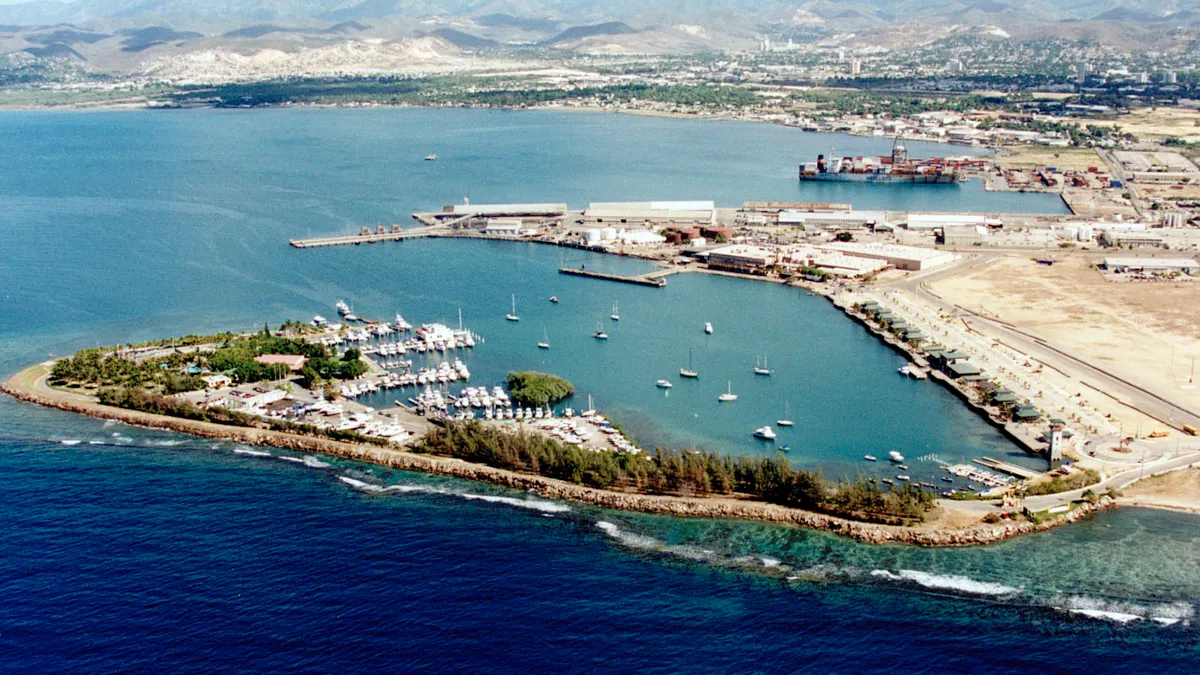Dive Brief:
- The Puerto Rico Electric Power Authority (PREPA) used its load shedding program to initiate rolling blackouts as two major units tripped offline last week, the utility's general director confirmed Friday.
- Wednesday at 7 p.m., operators at the 507 MW gas plant EcoEléctrica informed the electric co-op that all of its capacity came offline after a lightning strike. On Friday morning, a fire in the oil-fired San Juan Generation Station tripped the 120-MW Unit 5 offline.
- Load shedding has been used "five or six times in the last month," according to Daniel Hernández, PREPA's general director. Customers had largely regained service after recent load shedding events, but "this type of trip, regarding any malfunction, can occur at any moment" on the island's grid, he told Utility Dive.
Dive Insight:
The U.S. territory is badly in need of grid hardening and resiliency measures, as evidenced by the devastation wreaked by the 2017 Hurricane Maria, which caused most of the island to lose power. PREPA proposed a plan in conjunction with Siemens to increase resilience by creating microgrids within eight zones of the island.
The utility's proposed Integrated Resource Plan (IRP) includes a scenario to create eight "minigrids" in order to add renewables and smaller, more efficient conventional generation plants, pending approval by the Puerto Rico Energy Board.
"The way we see the system [operating reliably] is using big photovoltaic power plants, battery storage facilities and conventional new generation," Hernández said.
On Friday, a diesel spill caused a fire that resulted in some 65,000 PREPA subscribers losing power. About 100,000 subscribers were affected by the outage at the private generator EcoEléctrica, according to Hernández. At 9 a.m. on Monday, only 0.70% of PREPA's 1.5 million customers were without power and normal operations were resumed over the weekend, according to PREPA's press team.
"We are expecting not to have this type of outage ... with enough new generation," he said. "I'm pretty sure the system will be completely stable instead of what we have right now."
The IRP would add a fleet of small generation, with microgrids in each municipality to "connect critical load to small generators" in the event of another big hurricane like Maria, Hernández said. The generators would ensure service to critical loads in those regions, such as hospitals, water pumps and communications facilities.
"Having that distributed generation on strategic locations will definitely improve the stability of the system," Jorge Camacho, a consultant for energy regulators in Puerto Rico, told Utility Dive. However, he added that the minigrids laid out in the IRP are "conceptual."
Currently, load shedding is "the normal procedure to recover all the customers," when load trips suddenly offline, Hernández said. PREPA typically takes half an hour or less to recover, but it depends on power demand and generation availability. Load shedding programs are typically utilized when 200 MW or more goes offline abruptly.
PREPA has been involved in several load shedding events in the last month, although "typically we can put our generators out of service without affecting our customers," he said.
In the case of EcoEléctrica, one of the newest and most efficient generation plants on the island, PREPA was not able to replace 507 MW on the grid without load shedding.
"It's not unusual to have so many [generators trip offline] in a short time," but it's "not normal" for the generation to be taken off grid so abruptly, causing PREPA to use load shedding so often, Hernández said.
Camacho said the recent load shedding is an example of non-compliance with North American Electric Reliability Corporation (NERC) reliability standards.
"Load shedding is unacceptable," Camacho said. "We need to follow NERC transmission reliability standards in Puerto Rico."
While the island is not under jurisdiction of the Federal Energy Regulatory Commission, which enforces NERC standards, a 2014 law mandates that PREPA follow NERC reliability standards, to ensure enough resources are available if generation trips offline.
One of PREPA's IRP models proposes adding peaker gas plants to add stability to the system, and such gas generators could ramp up quickly when needed, Camacho said.
While Puerto Rico has advanced a goal this summer to achieve 100% clean renewable energy by 2050, the U.S. Department of Energy also has proposed adding a 1,200 MW gas plant on the island, which renewable energy advocates have opposed.
PREPA is carrying out maintenance initiatives in order to prevent their big generators tripping offline, although Gov. Wanda Vázquez announced plans in August to cancel a $450,000 grid modernization deal between Canadian engineering firm Stantec and PREPA.















